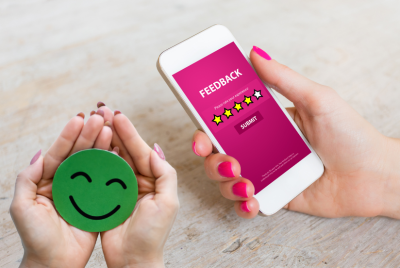Social Media Funnel: The Power of Digital Marketing Strategy
Introduction
In the age of digital connectivity, social media has become the modern-day town square where people gather, share, and interact. For businesses, harnessing the potential of social media is akin to tapping into a goldmine of opportunities. But how can you effectively channel this resource for your benefit? The answer lies in understanding and implementing the Social Media Funnel. This comprehensive guide will walk you through the ins and outs of this powerful tool, offering insights, strategies, and tips to make the most of your social media presence.
What Is a Social Media Funnel?
At its core, the Social Media Funnel is a structured approach to guide your audience through various stages, from initial awareness to ultimate conversion. Think of it as a virtual journey, where you use the vast expanse of social media platforms to engage and convert potential customers into loyal clients. The beauty of the Social Media Funnel lies in its adaptability to your business needs, making it a must-have strategy for companies of all sizes.
The Stages of the Social Media Funnel
Understanding the different stages of the Social Media Funnel is crucial. Each stage represents an opportunity to engage and build a lasting relationship with your audience.
1. Awareness: Catching Their Eye
At the top of the funnel is the Awareness stage. This is where you cast a wide net, aiming to capture the attention of as many potential customers as possible. Here, it’s all about creating content that piques their interest and makes them curious. You can achieve this by:
- Crafting captivating headlines that make your audience stop scrolling.
- Utilizing eye-catching visuals, images, and videos.
- Sharing relatable stories and experiences that resonate with your target demographic.
- Leveraging the power of trending hashtags to increase your reach.
2. Interest: Nurturing Their Curiosity
Once you’ve captured their attention, it’s time to nurture their curiosity. The Interest stage is all about providing valuable content that educates and entertains your audience. This is where you establish yourself as an authority in your niche. Strategies for this stage include:
- Publishing informative blog posts, videos, or infographics.
- Offering free resources, such as e-books or templates.
- Engaging with your audience through polls, surveys, and contests.
- Personalizing your interactions to make your followers feel valued.
3. Consideration: Building Trust
As your audience moves further down the funnel, trust becomes paramount. The Consideration stage is where you prove your worth and reliability. Key actions at this stage include:
- Showcasing case studies and testimonials from satisfied customers.
- Offering free trials or demos of your products or services.
- Providing in-depth product comparisons or reviews.
- Engaging in one-on-one conversations to address individual concerns.
4. Intent: Encouraging Action
Here’s where the real magic happens. In the Intent stage, your audience is primed for action. They’ve seen the value you offer, and now they’re ready to take a step closer to conversion. Tactics for this stage encompass:
- Offering limited-time discounts, exclusive offers, or early access to your products or services.
- Creating urgency through countdowns and reminders.
- Implementing clear and concise call-to-action (CTA) buttons.
- Simplifying the conversion process by reducing friction and making it as straightforward as possible.
5. Conversion: Sealing the Deal
The Conversion stage is the ultimate goal of the Social Media Funnel. This is where your audience makes the purchase, signs up for your service, or takes the desired action. To increase conversion rates, focus on:
- Providing multiple payment options to cater to diverse preferences.
- Offering a seamless and secure checkout process.
- Sending personalized thank-you messages and receipts.
- Leveraging post-conversion surveys to gather feedback and enhance the user experience.
6. Loyalty: Turning Customers into Advocates
The funnel doesn’t end at conversion; it extends to building long-term relationships. The Loyalty stage involves keeping your customers engaged and turning them into brand advocates. Strategies here include:
- Sending regular newsletters with valuable content and updates.
- Hosting exclusive customer events or webinars.
- Implementing a referral program to incentivize word-of-mouth marketing.
- Actively listening to customer feedback and continuously improving your offerings.
Strategies for an Effective Social Media Funnel
Now that we’ve outlined the stages of the Social Media Funnel, let’s dive into the strategies you can employ at each level to maximize your success.
1. Crafting Compelling Content
The lifeblood of the funnel is content. From attention-grabbing headlines to informative blog posts, creating engaging content is essential at every stage. Content is your vessel for conveying your brand’s identity and value.
2. Utilizing Social Media Platforms
Different platforms attract different demographics. It’s crucial to understand where your target audience spends their time and tailor your approach accordingly. From the hashtag culture of Instagram to the professional networking on LinkedIn, each platform offers unique opportunities.
3. Automating and Scheduling Posts
Consistency is key on social media. Utilize scheduling and automation tools to maintain a regular posting schedule. This ensures that you’re always in front of your audience, even when you’re not actively online.
4. Leveraging Data and Analytics
Data is your best friend in the digital landscape. Use analytics to monitor the performance of your posts, track engagement, and adjust your strategy accordingly. A/B testing can help identify what works best for your audience.
5. Building Relationships with Influencers
Collaborating with influencers in your niche can significantly boost your reach and credibility. Identify individuals who resonate with your brand’s values and mission to build authentic partnerships.
6. Implementing Social Proof
Reviews, testimonials, and user-generated content are powerful tools to build trust and credibility. Showcase them prominently at the Consideration and Conversion stages.
7. A/B Testing Your Approach
Experimentation is key to improvement. Regularly test different strategies, from post timings to content types, to determine what resonates most with your audience.
8. Personalization and Interaction
Remember that behind every profile is a real person. Engage in conversations, respond to comments, and be authentic in your interactions. Personalization can go a long way in building a loyal following.
9. Monitoring and Adaptation
The digital landscape is ever-evolving. Stay updated with industry trends and adjust your strategies accordingly. Flexibility is essential for long-term success.
10. Measuring ROI
Ultimately, your social media efforts should translate into a return on investment. Regularly assess your funnel’s performance, track conversions, and calculate your ROI to ensure that your efforts are paying off.
FAQs
Q1: Can the Social Media Funnel work for small businesses with limited resources?
Absolutely. The beauty of the Social Media Funnel is its scalability. You can start small and gradually expand your efforts as your business grows. It’s all about understanding your audience and creating content that resonates.
Q2: Is it necessary to be present on all social media platforms?
Not necessarily. Your choice of platforms should align with where your target audience spends their time. It’s better to excel on a few platforms than to spread yourself thin on all of them.
Q3: How can I measure the success of my Social Media Funnel?
Success can be measured through various metrics, including click-through rates, conversion rates, and return on investment (ROI). Use analytics tools to track your performance at each stage of the funnel.
Q4: What’s the ideal frequency for posting on social media?
The ideal posting frequency varies by platform and your specific audience. In general, consistency is more important than quantity. It’s better to post high-quality content consistently rather than flooding your feed with low-value posts.
Q5: How do I handle negative comments or feedback on social media?
Transparency is key. Address negative comments professionally and empathetically. Sometimes, turning a negative experience into a positive one can win you lifelong customers.
Q6: Is paid advertising necessary for a successful Social Media Funnel?
While organic growth is possible, paid advertising can accelerate your results. It’s an effective way to reach a wider audience and can be a valuable addition to your funnel strategy.
Conclusion
In the fast-paced world of social media, having a well-defined and thought-out Social Media Funnel is your secret weapon. It provides a roadmap to guide potential customers through the journey from awareness to loyalty. By crafting compelling content, understanding your audience, and staying adaptable, you can create a powerful social media strategy that drives results for your business. So, start implementing the Social Media Funnel today and watch your online presence flourish. The sky’s the limit!




